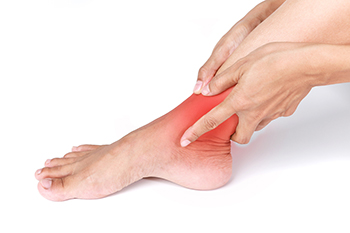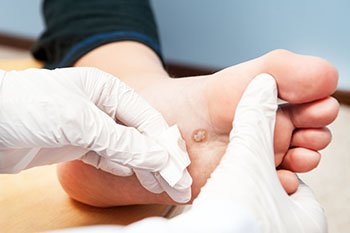
Nerve tissue that forms in a specific part of the foot may indicate Morton’s neuroma has developed. This is a condition that affects the area between the third and fourth toes, and despite how painful it can be, it is generally a benign growth. It happens when this area becomes irritated or compressed, and a common cause can be from wearing shoes that do not have enough room for the toes to move freely in. High heels fit into this category, and this may be a reason why women are more affected by Morton’s neuroma than men. The discomfort that is felt from this condition is in the ball of the foot. Many patients report the pain is likened to having a small pebble in their shoe or sock and often look to feel better. There are specific stretches that can be performed which may help to find moderate relief, in addition to having regular foot massages done. If you have pain in this part of your foot, it is suggested that you consult with a podiatrist who can diagnose Morton’s neuroma, and offer you correct treatment solutions.
Morton’s neuroma is a very uncomfortable condition to live with. If you think you have Morton’s neuroma, contact one of our podiatrists of Canonsburg Podiatry Associates. Our doctors will attend to all of your foot care needs and answer any of your related questions.
Morton’s Neuroma
Morton's neuroma is a painful foot condition that commonly affects the areas between the second and third or third and fourth toe, although other areas of the foot are also susceptible. Morton’s neuroma is caused by an inflamed nerve in the foot that is being squeezed and aggravated by surrounding bones.
What Increases the Chances of Having Morton’s Neuroma?
- Ill-fitting high heels or shoes that add pressure to the toe or foot
- Jogging, running or any sport that involves constant impact to the foot
- Flat feet, bunions, and any other foot deformities
Morton’s neuroma is a very treatable condition. Orthotics and shoe inserts can often be used to alleviate the pain on the forefront of the feet. In more severe cases, corticosteroids can also be prescribed. In order to figure out the best treatment for your neuroma, it’s recommended to seek the care of a podiatrist who can diagnose your condition and provide different treatment options.
If you have any questions, please feel free to contact our office located in Canonsburg and McMurray, PA . We offer the newest diagnostic and treatment technologies for all your foot care needs.





